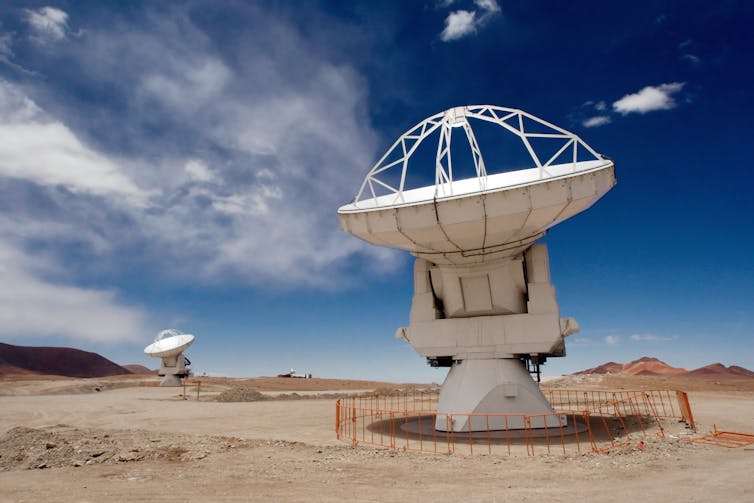Putin’s Russia: people increasingly identify with the Soviet Union – here’s what that means
The view that the Russian president, Vladimir Putin, wants to restore territories of the Soviet Union has been a big part of the commentary on Russia’s invasion of Ukraine

Estimated reading time: 6 minutes
Stephen Whitefield, University of Oxford and Paul Chaisty, University of Oxford
But how much is he in tune with the wishes of the Russian people? Our research suggests that while Russian citizens increasingly identify with the USSR, this is only partially explained by their desire to expand Russia’s borders.
People’s identification with the Soviet Union appears to have a clear and growing basis in Russian public opinion. Surveys we have conducted throughout the Putin period show that Soviet identification among the general population – something that had been steadily declining after the collapse of the Soviet Union in 1991 – began to increase in 2014, when the Russian government annexed Crimea and supported rebellions in the Ukrainian regions of Luhansk and Donetsk. By 2021, almost 50% of those surveyed identified with the Soviet Union rather than the Russian Federation.
This pattern was also evident among Putin’s supporters. As the graph below shows, after we have controlled for age and affluence – two variables that are strong predictors of identifying with the Soviet Union, with older and less affluent people more inclined to identify with the USSR – the probability that Putin voters are likely to be Soviet rather than Russian identifiers increases significantly after 2014.
But is this growth in Soviet identity motivated by support for Putin’s expansionist policies? In other words, did the annexation of Crimea create a bedrock of expansionist support for the Kremlin’s military assault on Ukraine in 2022?
Hankering for the past
Identification with the Soviet past can derive from many sources. These tend to include nostalgia for Soviet era economic and welfare policies as well as a cultural nostalgia for a particular Soviet “way of life” and traditional values. It can also manifest as a desire for direct worker participation in politics, and a rejection of “elitist” forms of representative liberal democracy. Finally – and in line with the primary focus of our research – identifying with the Soviet Union may stem from hostility towards perceived western interference and a desire to expand Russia’s borders to include parts of the former Soviet Union – the so-called “near abroad”.
So which of these is most important among Russian citizens? Our data do not support the idea that expansionist or anti-western attitudes are the primary reason people want to identify with the USSR, although they may have been a strong catalyst in 2014.
The chart below reports the probabilities for a direct measure of support for “expanding Russian borders to include the ‘near abroad’”, which we asked in 2001, 2003, 2014 and 2018. We also asked about people’s views of the market economy, whether they had conservative cultural views, “Leninist” notions of worker political participation and anti-western sentiment. Our findings suggest that expansionism played little role for Russian citizens in 2001 or 2003 – and was not the most significant element driving Soviet identity in 2018 either. Its effect was greatest in 2014, which is consistent with the “rally around the flag” effect that followed Russia’s annexation of Crimea.
Likewise, anti-western sentiment has not been the main driver of recent Soviet identification among Russians. Our fourth graph, below, summarises probabilities for the effects of anti-western attitudes across all the surveys we conducted from 2001 to 2021, along with the other measures. As can be seen, the effect of anti-western attitudes has largely diminished over time. In most years, we find that cultural conservatism and anti-market sentiment have been the main reasons why people might prefer to identify with the Soviet Union.
Rally round the flag?
The magnitude of the current conflict has the potential to deepen anti-western attitudes in Russia and to stimulate a further bout of “rallying around the flag” in support of Putin’s expansionist war.
Yet the economic and cultural bases of Soviet identity are likely to remain key to Putin’s support. These factors have enabled Putin to broaden his political coalition since returning to the presidency in 2012. Support for Soviet-style social benefits featured in his election campaign in 2018, and was part of the political offer made to the Russian people in 2020 to secure constitutional changes that could keep him in office until 2036.
The economic costs imposed on Russians through sanctions could undermine this appeal, but as we argue in other research, this is unlikely to have an immediate impact.
Stephen Whitefield, Fellow in Politics, University of Oxford and Paul Chaisty, Professor of Russian and East European Politics, University of Oxford
This article is republished from The Conversation under a Creative Commons license. Read the original article.
What's Your Reaction?
























